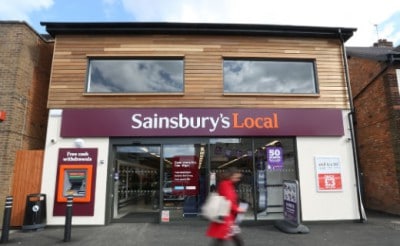
Supermarkets have moved quickly to capitalise on a growth of inner city dwellers with smaller houses but some retailers like Walmart, Tesco, Morrisons and even Woolworths are back peddling due to the risks.
With the rise of smaller one and two bedroom apartments with smaller kitchens and an abundance of restaurants, bistros and cafes that amass inner-city streets, consumers are accordingly purchasing groceries more frequently, up to three times per week and in smaller volumes.
Convenience store growth, online grocery sales and the aggressive expansion of discounters like Aldi, have progressively changed shopping behaviour, encouraging regular top up shopping rather than weekly one stop shops. As a result, the big four UK grocery retailers now run more convenience stores like Tesco Express, Tesco Metro, Sainsbury’s Local and M Local, than full line supermarkets. Woolworths has also dipped its toe cautiously into the convenience market.
The challenge of convenience
While the convenience market proposes opportunities for large supermarkets, it also presents risks. The attractiveness of lower build, fitout, and leasing costs associated with opening smaller store formats, is weighed against less space and accordingly, less range. Misreading the needs of the local market and getting that range wrong, will negatively impact on sales.
The costs associated with running convenience are significantly higher than large format supermarkets. Wage costs in convenience stores can hover above 13 percent, whereas a full-line supermarket can run on less 9% wages to sales. Waste, shrinkage and other operating expenses are inflated as a result of lower sales.
Competition is ferocious. While a supermarket may compete with another neighbouring supermarket, supermarket run convenience stores may find themselves in direct competition with local delicatessens, bakeries, butcheries, news agencies, all vying for the best locations and customers’ dollar.
Eating themselves alive
There are no switching costs in grocery retailing and shoppers today are not mortgaged to any food retailer. This lack of shopper loyalty has driven UK supermarkets to ultimately cannibalise their own sales by rushing to open smaller format stores.
By opening convenience stores on high streets, transit hubs and inner city areas, the supermarkets have encouraged consumers to shop more frequently for groceries, rather than doing the one big weekly shop.
Today, shoppers now pop into the convenience store to purchase their evening meal on the way home from work, shop in a supermarket for non-perishable foods and then drop into a discounter like Aldi for a bargains. While a move into convenience and smaller store formats make sense, supermarkets should be aware of the risks ever present.
Abandoning the small store strategy
In response to an aggressive rollout of small format stores and the protracted price wars, Tesco announced it would review its fleet of stores. It closed 43, 18 of which were Tesco Express convenience stores and 12 smaller Tesco Metro urban stores. Similarly, UK grocery chain Morrisons also moved to closed around 10 convenience stores.
In the US, Walmart announced the closure of more than 100 Walmart Express stores, citing a return to the big retail store format.
Here in Australia, four Woolworths metro stores are targeted for closure with the renewal of leases of a further five stores in jeopardy.
It appears Woolworths CEO, Brad Banducci, has taken a leaf out of the play book of Morrisons’ Chairman, Andy Higginson’s , who said he now wants Morrisons to focus on its supermarkets. Banducci’s briefing to the market illustrated a returned focus on Woolworths’ core business of supermarkets and liquor.
The strategy involved slashing ranges of tiered private label products, closing under performing stores, increasing productivity and cutting costs. It’s a smart strategy indeed that will lead to a leaner, meaner, agile Woolworths in the years ahead.
Gary Mortimer, is Associate Professor at Queensland University of Technology. This article was originally published on The Conversation.




















